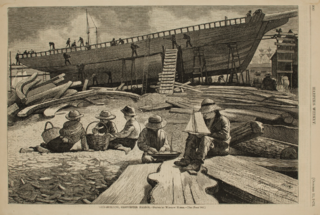
Shipbuilding is the construction of ships and other floating vessels. It normally takes place in a specialized facility known as a shipyard. Shipbuilders, also called shipwrights, follow a specialized occupation that traces its roots to before recorded history.
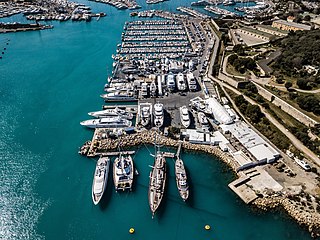
A shipyard, also called a dockyard or boatyard, is a place where ships are built and repaired. These can be yachts, military vessels, cruise liners or other cargo or passenger ships. Compared to shipyards, which are sometimes more involved with original construction, dockyards are sometimes more linked with maintenance and basing activities. The terms are routinely used interchangeably, in part because the evolution of dockyards and shipyards has often caused them to change or merge roles.

Dhow is the generic name of a number of traditional sailing vessels with one or more masts with settee or sometimes lateen sails, used in the Red Sea and Indian Ocean region. Typically sporting long thin hulls, dhows are trading vessels primarily used to carry heavy items, such as fruit, fresh water, or other heavy merchandise, along the coasts of Eastern Arabia, East Africa, Yemen and coastal South Asia. Larger dhows have crews of approximately thirty and smaller ones typically around twelve.

Teak is a tropical hardwood tree species in the family Lamiaceae. It is a large, deciduous tree that occurs in mixed hardwood forests. Tectona grandis has small, fragrant white flowers arranged in dense clusters (panicles) at the end of the branches. These flowers contain both types of reproductive organs. The large, papery leaves of teak trees are often hairy on the lower surface. Teak wood has a leather-like smell when it is freshly milled and is particularly valued for its durability and water resistance. The wood is used for boat building, exterior construction, veneer, furniture, carving, turnings, and various small projects.
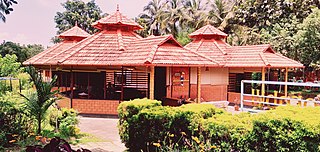
Nilambur is a major town, a municipality and a Taluk in the Malappuram district of the Indian state of Kerala. It is located close to the Nilgiris range of the Western Ghats on the banks of the Chaliyar River. This place is also known as 'Teak Town' because of the abundance of Nilambur teaks, which is a variety of a large, deciduous tree that occurs in mixed hardwood forests. Unlike many Municipalities of India; Nilambur is covered with large amounts of vegetation, making it very scenic.

Chaliyar River is the fourth longest river in Kerala at 169 km in length. The Chaliyar is also known as Chulika River, Nilambur River or Beypore River as it is near the sea. Pothukal, Chungathara, Nilambur, Mampad, Edavanna, Kavanoor, Perakamanna, Areekode, Kizhuparamba, Elamaram, Cheekkode, Vazhakkad, Vazhayur, Cheruvadi, Edavannappara, Mavoor, Peruvayal, Feroke and Beypore are some of the towns/villages situated along the banks of the Chaliyar. It mainly flows through Malappuram district. Its tributaries flow through both the districts of Malappuram and Kozhikode. The bank of river Chaliyar in the Nilambur region is also known for its natural Gold fields. Explorations done at the valley of the river Chaliyar in Nilambur have shown reserves of the order of 2.5 million cubic meters of placers with 0.1 gram per cubic meter of gold. It originates at the Ilambaleri hills of Nilgiri Mountains in Nilgiris district, which is also near Wayanad-Malappuram district border. It flows mainly through the erstwhile region of Eranad, and finally empties into the Arabian Sea at Beypore port, opposite to Chaliyam harbour.

Kettuvallam is a houseboat widely used in the Indian state of Kerala. These have thatched roof covers over wooden hulls. The traditional kettuvallam is mainly used for promoting Kerala tourism.
Beypore or Beypur is an ancient port town and a locality town in Kozhikode district in the state of Kerala, India. It is located opposite to Chaliyam, the estuary where the river Chaliyar empties into Arabian Sea. Beypore is part of Kozhikode Municipal Corporation. The place was formerly known as Vaypura / Vadaparappanad and also as Beydary. Tippu Sultan, ruler of Mysore, named the town "Sultan Pattanam". There is a marina and a beach while Beypore port is one of the oldest ports in Kerala, which historically traded with the Middle East. Beypore is noted for building wooden ships, known as dhows or urus in the Malayalam language. These ships were usually bought by Arab merchants for trading and fishing but are now used as tourist ships. According to Captain Iwata, founder member of the Association of Sumerian ships in Japan, Sumerian ships might have been built in Beypore. There is evidence to prove that Beypore had direct trade links with Mesopotamia and was a prominent link on the maritime silk route. The first railway line of Kerala was laid in 1861 from Tirur to Beypore (Chaliyam) passing through Tanur, Parappanangadi, Vallikkunnu, and Kadalundi.

Kallai is a small town on the banks of Kallai River which links with the Chaliyar river on the south by a man-made canal. It is in the Kozhikode district of Kerala in south India and is noted for timber trading.
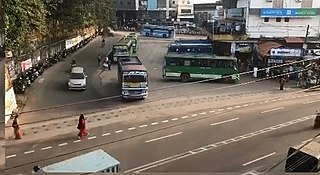
Feroke is a Municipality and a part of Kozhikode metropolitan area under Kozhikode Development Authority (K.D.A) in the Kozhikode district of the Indian state of Kerala.
The Gulf Times newspaper has been founded in 1978 as the first publication of the Gulf Publishing and Printing Company in the capital city of Qatar, Doha. It is one of three English language newspapers in the country. It is published by Abdullah bin Hamad Al Attiyah, the former deputy prime minister and the former head of the Emir's court. The current chairman of Gulf Times is Abdullah bin Khalifa al-Attiya, while the editor-in-chief is Faisal Abdulhameed al-Mudahka making the editor in charge K T Chacko.

The national emblem of Qatar is one of the official symbols of the state of Qatar. The emblem was initially adopted six years after the termination of the British protectorate, with the gained independence as a country under Sheikh Ahmad bin Ali Al Thani, and was designed under the reign the Emir of Qatar Khalifa bin Hamad Al Thani in 1976.
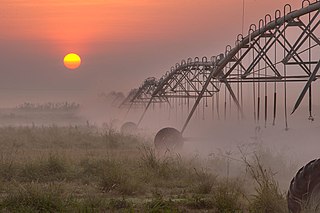
Agriculture in Qatar is inherently limited in scope due to the harsh climate and lack of arable land. In spite of this, small-scale farming, nomadic herding, and fishing were the predominant means of subsistence in the region prior to the 20th century. Sea-based activities such as pearling and fishing served as the primary sources of income for Qataris until the commencement of oil drilling in 1939.

A boum/boom, known as dhangi in India, is a medium-sized deep-sea dhow, a traditional Arabic sailing vessel.

Khalasis are skilled natives engaged in constructing handmade seagoing Uru boats at Beypore port town of Kerala, India. Since majority of them are traditional Mappila Muslims, they are also called Mappila Khalasis. They also draw Urus ashore for repair and maintenance. Khalasi in Arabic means dockyard worker, sailor, or lascar.

Building System Integration (BSI-Steel) is an industrial company situated in the Doha New Industrial Area, Qatar. BSI-Steel is the first of its kind in Qatar for the design, manufacture and supply of steel buildings up to four floors. It is a different product from the traditional method of ready clips, where high voltage iron sheets are manufactured to bridges and columns to form the required iron building, occupying more space than the traditional method with decreased cost.

The modern Qatari art movement emerged in the mid-20th century, as a result of the new-found wealth acquired from oil exports and the subsequent modernization of Qatari society. Because of Islam's non-inclusive stance of depictions of sentient beings in visual arts, paintings historically played an insignificant role in the country's culture. Other visual art forms such as calligraphy, architecture, and textiles were more highly regarded in the Bedouin tradition.
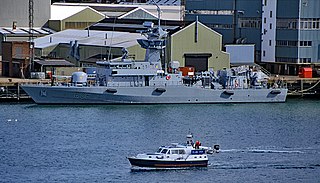
The Qatari Emiri Navy (QEN), also called the Qatari Emiri Naval Forces (QENF), is the naval branch of the armed forces of the State of Qatar.

Uru (transl. Dhow) is a 2023 Indian Malayalam-language drama film written and directed by E. M. Ashraf. It features Mamukkoya, Manju Pathrose and Manoj K. U. in the lead roles. The film follows the story of an expatriate who was assigned to the supervision of Uru construction in Beypore and the challenges he meets during its manufacturing.


















